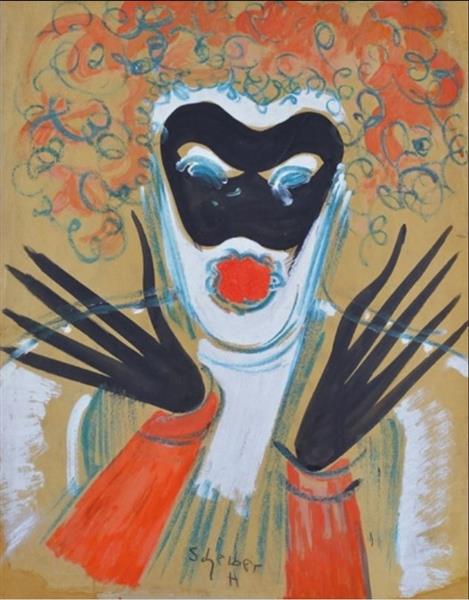Description
The work "Maszkabál" by Hugó Scheiber is a fascinating example of the style of the Hungarian painting of the twentieth century, which combines elements of modernism with a rich palette of vibrant colors and a carefully orchestrated composition. In this painting, the artist immerses us in a world of celebration and mystery, a dance of shapes and colors that evoke the atmosphere of a carnival.
When analyzing the composition, a series of motion figures are observed, which seem to flow and intertwine in an bustle of activity. The use of curved and undulating lines creates a feeling of dynamism, suggesting both the joy and effervescence of a festive event. Scheiber uses an almost abstract approach in the representation of these characters, which are transformed into stylized forms instead of detailed figures. This stylistic choice allows the viewer to focus on the emotion that emanates from the scene rather than in the identification of individual characteristics.
The colors in "Maszkabál" are particularly notable. Scheiber uses a rich and varied palette, where warm tones predominate, creating a cozy atmosphere that invites participation. The yellow, red and oranges encourage the composition, while the shadows in blue and green add depth, contributing to the sensation of three -dimensionality in a fundamentally two -dimensional environment. This interaction between warm and cold colors gives life to the work, making the viewer feel not only that he is observing, but is also experiencing the moment.
It is important to note that Hugó Scheiber's work cannot be dissociated with the cultural context in which he enrolls. Born in 1873 in Budapest, Scheiber was a painter who, throughout his career, felt strongly influenced by symbolism and Fauvism, in addition to the vitality of Hungarian popular art. His work, to a large extent, captures the essence of the cultural identity of his country, combining modern techniques with traditional themes. "Maszkabál", with its theme of holiday, connects with this identity, reflecting a moment of celebration in the social life of the time.
Although "Maszkabál" is a singular work, it can be contextualized within the movement of modern art that, in the first half of the twentieth century, began to challenge the conventions of academic art. Scheiber's semiabstract style can be found in the work of other contemporaries of his who explored the relationship between shape and color, leaving behind the literal representation in favor of a more emotional and sensory expression. Painters like Henri Matisse and André Derain experienced with similar color explosions and fluid shapes, although each with their own voice and context.
In conclusion, "Maszkabál" by Hugó Scheiber is a visual celebration that goes beyond the simple representation of a carnival. It is a work that encapsulates the essence of the cultural identity of Hungary and its modernism, capturing the vibrant energy of a holiday and offering the viewer an immersive experience through its palette and composition. In it, you can feel the pulse of life, the rhythm of the celebration, and the artist's deep connection with the traditions of his land, transformed here into a visual party.
KUADROS ©, a famous paint on your wall.
Hand-made oil painting reproductions, with the quality of professional artists and the distinctive seal of KUADROS ©.
Art reproduction service with satisfaction guarantee. If you are not completely satisfied with the replica of your painting, we refund your money 100%.

